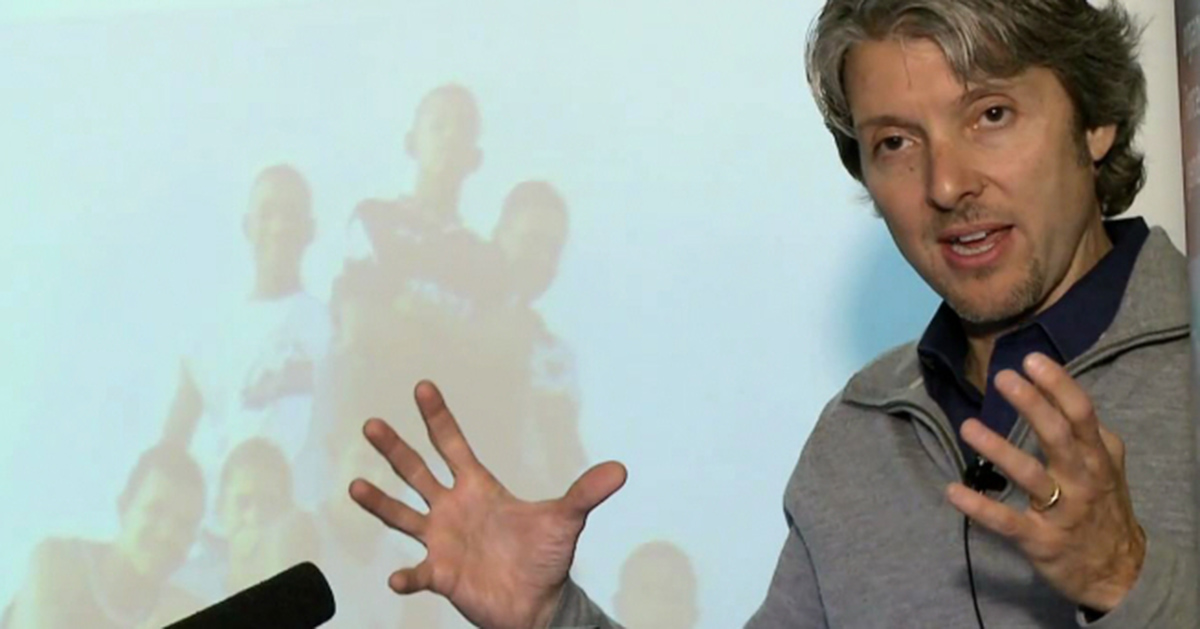
By Gary Barker
Originally posted in OmVärlden (in Swedish)
Engaging men in gender equality is a growing field that has become increasingly popular to talk about. In the past 10 years, it has become a hot topic for donors. We have seen an avalanche of program guides, manuals, and data reviews, and programs being implemented in the global South. What have we learned with this work? Is it making a difference? And what is needed to see the mostly small-scale community or group work turn into larger-scale change?
First off, let’s acknowledge what we have learned. There is a growing body of evidence-based and documented practice that small-scale work can improve community and individual outcomes related to gender attitudes, men’s use of violence against women, reproductive health, HIV/AIDS, and men’s participation in caregiving. There is also evidence that engaging men as partners in tandem to women’s economic empowerment makes that empowerment work better.
Small-scale work
From community mobilization, to bystander interventions to prevent men’s use of violence against women, to gender transformative HIV prevention, to parent training for men (and women), there are many success stories. And they deserve celebrating – up to a point.
The challenge is that the scale of the work has been too small. Few of these success stories, with some exceptions, have turned into policies or initiatives with the potential to transform tens or hundreds of thousands of lives. What are the exceptions? Mostly when we have gotten governments to take it on. That means getting ministries of health to make father involvement part of their pre-natal and maternal health programs, or when ministries of gender equality make engaging men part of their national income support programs for women. There are a few countries that have started such processes – Brazil, Chile, Rwanda and South Africa, among a handful of others. With that said, evidence of societal-level change in men’s attitudes and practices related to gender equality is still a ways off.
Feminist activism: a powerful force
What do we know about what drives large-scale change in terms of men and gender equality? Is it more “engaging men” projects, or something else? The most successful force in changing men’s attitudes and practices related to gender equality is obvious. It’s called feminist activism, or the collective women’s rights movements. More than any other social force, policy or program intervention, the collective civil society and political efforts to promote women’s empowerment – socially, politically and economically – are the leading driver of change in men’s attitudes and practices in terms of gender equality.
Clearly, other factors are driving changes in men’s attitudes and practices as well. Household surveys we have carried out in more than 20 countries (the International Men and Gender Equality Survey, or IMAGES) find that urbanization, men’s educational attainment, and women’s education are all contributing to men having more equitable attitudes and practices in much of the world. Indeed, there seems to be real cultural diffusion when it comes to men’s views and broader social norms about gender equality. Urbanization brings challenges to be sure, but it also brings more exposure to human rights perspectives, to women working in the paid economy, and greater educational opportunities for girls. The result is that some level of equality between women and men, boys and girls, is becoming the new normal for a younger generation of young men in much of the world.
There’s also a multiplier effect in these changes: it matters that boys and girls see their fathers treating their mothers well. As more fathers do that, more children pass it on. It matters that they see their parents and teachers respecting sexual diversity. Numerous studies, including IMAGES, find that gender equality pays forward: empowered, educated mothers and equitable fathers on the whole are more likely to produce empowered, equitable children.
Men and privilege
And yet, data from our IMAGES research tells us that asking men to give up privilege is a considerably difficult challenge. There has been little increase in men’s and boys’ participation in daily caregiving compared to women and girls in the global South, and we know that women’s time devoted to unpaid care work is one of the largest impediments to full equality. We also know that there has been little change in nearly all the world when it comes to women’s incomes relative to men’s. High percentages of men (and women) continue to believe that if jobs are scarce – which they nearly always are in the global South – they should go to men. And from IMAGES, we see that relatively few men support quotas or other more structural measures to promote women’s equal participation in politics and in the job market.
In addition, while a growing percentage of men (and women) believe that violence by men against women is not acceptable, most countries have yet to end the impunity that still surrounds such violence. We also know that violence in childhood continues to be a major driver of men’s adult use of violence. The conclusion is that while social norms are one driver of men’s use of violence against women and girls, it is again the structural factors (women’s lower income and social mobility compared to men, the lack of adequate legal protection) combined with men’s and women’s childhood experiences of violence that underlie it.
Engaging men as the means not the goal
In light of these trends, where does the field of “engaging men” need to go? First, in engaging men for gender equality, we must remind ourselves that our program activities, as important as they are, are the means – not the end. Our focus should not be merely on how many men participate in our community or school-based or workplace-based activities. Our end goal is social and gender justice at the national and global level.
Donors and governments – and women’s rights groups – and we, as practitioners, should hold our work accountable to that goal. Yes, individual women’s and men’s lives matter and individual stories of change matter. We need men activists as allies with women’s rights activists. We need men standing up and questioning gender inequality every day. And we urgently need more men involved in collective action with women’s rights and other social justice movements.
But more importantly, we need policies and large-scale initiatives that combine individual change with structural change. These should include gender-informed and gender-transformative public services (health, education, child care and more), and quotas or other policies that promote women’s advancement and that engage men as allies in the process. We need bystander approaches in violence prevention taken to scale. We need coordinated community norm change programs; parent training made available through national child care programs; universal access to psycho-social support for young men and women who witness violence growing up; and income generation for women combined with community norm change approaches.
We must also ensure that our work is intersectional: that it looks at economic inequalities and other disadvantages and historical inequalities based in ethnicity, sexual orientation, and other factors. Achieving equality for women requires a functioning state that is accountable to its citizens. It requires universally accessible health and education and other social services. It requires universal health care and education, and a living wage to guarantee economic stability for all households. And it needs the collective action of citizens who organize around gender justice and social justice, holding their governments accountable.
The recent political movements that elected Trump, and impeached Brazil’s former President Dilma Rousseff, or those that led to the vote against the peace treaty in Colombia, and for the UK’s exit from the EU, are all examples, in different ways, of a frightening wave of right-wing populism. This wave is driven in part by fear of and by real economic decline among some groups. But it has been misguided in that it turns anger from economic instability against immigrants and minorities, and at times against gender equality.
Backlash and the need to scale-up
We are already seeing the effects of these right-turning governments and movements. Brazil’s current administration is rolling back its social and gender equality policies of the past 14 years. President-Elect Trump’s list of policy intentions confirms his administration’s desires to role back gains in health, education, and gender equality.
In the face of anti-welfare state, anti-equality governments, our programs for engaging men at the community level are far too limited. While we think about rolling out programs and as we’re tempted to celebrate the success of our program impact, we need to realize that our advocacy and activism must focus on scaling-up and on creating a functioning, equitable welfare state. In sum, nothing short of collective activism, of alliances with women’s rights movements, and of direct, daily accountability of elected leaders will achieve the gender justice we need. It will take more than good log-frames and evidence.
As we think about the state of the field of engaging men in gender equality, we must keep our focus on the big picture. The gender equality revolution won’t be won if we compete over tiny pots of funds. The gender justice revolution will be fought with civil society calling for structural changes. We need to stop thinking about engaging men as if it were an end in itself, and think more about men and women working together – resisting, changing, envisioning, and creating societies where social justice thrives.
